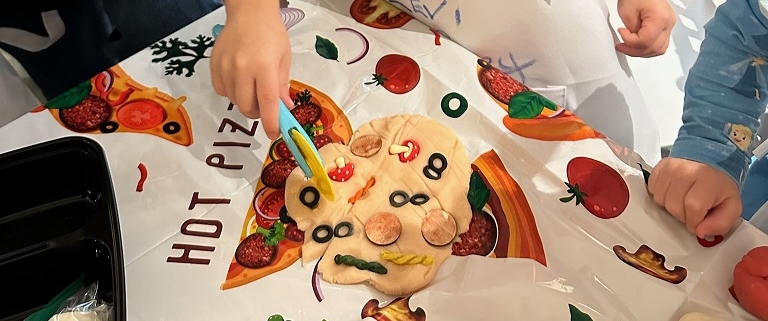Weekly Adventures Around the World: Cultural Learning Through Play
In today’s interconnected world, fostering cultural awareness and diversity in your child is more important than ever. Exposing kids to different cultures helps them develop empathy, broaden their perspectives, and equips them with skills to thrive in a global society. One of the most engaging ways to achieve this is through play and hands-on activities.
Let’s explore how your family can embark on weekly adventures to different countries, bringing each culture to life through art, music, cooking, and games.
Mexico: Crafting and Music
Dive into the vibrant world of Mexico by creating a traditional, colorful banner used for celebrations. This activity will hone your child’s fine motor skills while immersing them in Mexico’s festive spirit.
| To make a papel picado: Start with colorful tissue paper and fold it accordion-style. Then, fold it in half and cut small shapes along the edges, like a paper snowflake. Unfold the tissue paper carefully to reveal a beautiful pattern. Attach the finished designs to a string or ribbon to create a festive banner. |
Music is a heartbeat of Mexican culture. Explore the lively sounds of mariachi bands with artists like Mariachi Real De San Diego and Mariachi Cobre. Play along by constructing simple instruments like maracas using recycled materials. With this hands-on musical journey, your child learns rhythm and the joy of Mexican traditions.
| To make simple maracas using recycled materials: Start with empty plastic bottles or containers. Fill each bottle partially with dried beans, rice, or small pebbles to create the rattle. Secure the lids tightly with tape or glue. For added fun, let kids decorate the bottles with paint, stickers, or colorful tape. |
Japan: Origami and Sushi
Turn your attention to Japan, where your child learns the delicate art of origami. Start with this easy Origami Puppy — or, for older kids, try the Origami Jumping Frog that really hops. Folding paper into intricate shapes teaches patience and creativity, introducing them to the beauty of Japanese aesthetics.
Next, enhance the sensory experience with a culinary adventure by making onigiri.
| To make Japanese-style sticky rice balls (onigiri): Start by cooking short-grain rice until it is sticky. Once the rice is cooked, let it cool slightly. Wet your hands with water and sprinkle salt on them to prevent the rice from sticking. Take a handful of rice and shape it into a ball or a triangle. Place a small piece of filling, such as pickled plum (umeboshi), salmon, or tuna, in the center before shaping. Finally, wrap a strip of nori (seaweed) around the rice ball for added flavor and texture. |
Italy: Pizzas and Bocce
Transport your child to Italy, where they can get hands-on with mini pizzas. This delicious activity introduces them to the basics of Italian ingredients and cooking.
| To make easy Italian mini pizzas: Roll store-bought dough into small circles about 4-5 inches in diameter. Spread a thin layer of tomato sauce on each circle. Top with mozzarella cheese, pepperoni, mushrooms, and/or bell peppers. Bake in a preheated oven at 475°F (245°C) for about 10-12 minutes. Finish with a sprinkle of fresh basil or oregano before serving. |
Italian culture is rich with traditional games. Bocce ball, for example, is a fun game that develops coordination and strategic thinking. Playing such games allows your child to engage in physical activity while learning about Italian leisure and social interactions.
| To play bocce: Each team gets four colored balls (usually two per player or four per team in doubles).One team throws a small white target ball, called the pallino, onto the court. Players then take turns throwing their balls, aiming to get them as close as possible to the pallino. The team with the closest ball earns 1 point for each ball closer to the pallino than the opposing team’s closest ball. Play continues until all balls are thrown, and the team that reaches 21 points first wins. |
India: Holi and Dance
In week 4, explore vibrant Indian colors by having your own Holi Festival. Celebrated primarily in India and Nepal, Holi marks the arrival of spring, symbolizing the victory of good over evil and the onset of new beginnings. Participants celebrate by throwing colored powders and water, signifying joy and unity.
| For Holi fun at home: Gather safe colored powders (made from food dye and corn starch). Dress in old, light-colored clothes with sunglasses for eye protection. Find a spacious outdoor area and take turns gently throwing powders at each other. Afterward, brush off excess powder and wash up with mild soap and water. Enjoy snacks like samosas together to celebrate togetherness. |
Bollywood dance is important in Indian tradition as a reflection of cultural values and storytelling — and also as a unifying expression of joy, emotion, and celebration across diverse communities. Simple Bollywood dance routines can be taught, promote physical fitness and encourage your child’s self-expression, while providing a glimpse into Indian culture through dance.
Why Hands-On Cultural Learning Matters
Hands-on activities are crucial in enhancing learning because they engage multiple senses and make abstract concepts tangible. When your child actively participates in crafts, music, cooking, and games, they are more likely to retain information and develop a deeper understanding of cultural nuances.
These activities also encourage family collaboration and communication, fostering social skills and teamwork. By working together on a craft or playing a traditional game, your child learns to appreciate different perspectives and develop mutual respect.
Give Your Child the Gift of Global Awareness
For parents looking to enrich their child’s summer with educational and cultural adventures, consider immersive programs — like Shine’s Globe Trekkers. Geared toward ages 4-12, we explore a new country each week. Through art, music, flavors, and games, your child can gain a profound appreciation for cultural diversity while having a fantastic time.



